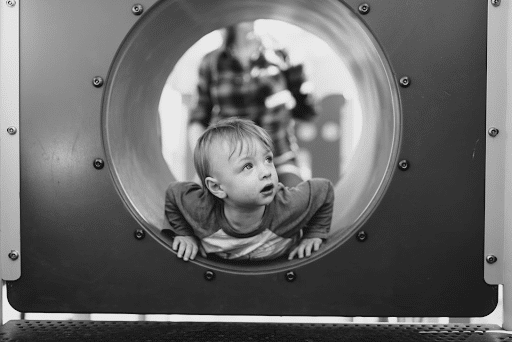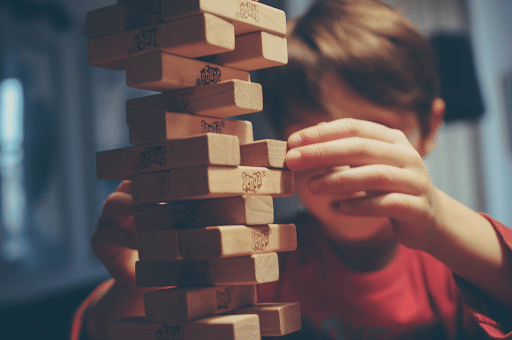As pelvic floor therapists, you’ve likely encountered young patients with chronic bowel conditions that despite your best efforts, the root cause feels elusive. Although common, Hirschsprung’s disease is one of those diagnoses that may fly under the radar, leaving you frustrated with why standard interventions aren’t working. If you’ve ever felt confused by persistent symptoms that don’t respond as expected, or you find yourself unsure how to fully support a child with Hirschsprung’s disease, you’re not alone.

This condition requires a nuanced understanding and a tailored approach that integrates pelvic floor therapy into the broader picture of care. By gaining a deeper knowledge of Hirschsprung’s disease and the unique challenges these children face, you can provide more effective treatments and dramatically improve their quality of life.
In this blog, we’ll explore what Hirschsprung’s disease is, how it affects bowel function, and most importantly, how you, as a pediatric pelvic floor therapist, can be a crucial part of their recovery.
What Is Hirschsprung’s Disease?
Hirschsprung disease is a congenital condition in which the enteric nervous system ganglion cells are missing from parts of the distal intestine. The ganglionic cells are responsible for coordinating the muscles of the bowel to move stool through the digestive tract. When part of the bowel is aganglionic, the affected segment of the colon cannot relax properly, leading to functional intestinal obstruction and an inability to pass stool.

This condition is typically diagnosed in newborns in the first few days of life. If a neonate doesn’t pass meconium in the first 24-48 hours of life, they should be assessed for Hirschsprung’s. Some milder cases may not be identified until later in infancy or childhood. Symptoms often include:
- Chronic constipation
- Distended abdomen
- Vomiting
- Poor feeding
- Failure to thrive
If left untreated, Hirschsprung’s disease can lead to life-threatening complications, such as infection or bowel rupture.
The Surgical Intervention For Hirschsprung’s Disease
The primary treatment intervention for Hirschsprung’s disease is surgery, where the affected portion of the colon is removed in a procedure called a pull-through surgery. The aganglionic segment is removed and the intact bowel is pulled down to the anus.
While this often resolves the mechanical issue, children are quite often left with a range of bowel management challenges. Despite the technical skills of a surgeon, intestinal tissue is inevitably damaged during this procedure. The rectum and anus contain dense sensory neural tissues, which can be affected during surgery and contribute to fecal incontinence afterward.
This is where your exceptional, unique skills as a pediatric pelvic floor therapist now have the greatest impact.

Post-surgery, children may face:
-
- Chronic constipation due to slow motility or residual areas of dysfunctional bowel. Consider whether an anatomical or pathological obstruction may be present and rule these out before initiating treatment of constipation.
- Fecal incontinence and soiling as the repaired bowel may struggle with coordinated muscle function. Children with more complex anorectal malformations or spinal cord disorders will have further issues.
- Pelvic floor dysfunction, including difficulty coordinating relaxation and contraction of the pelvic floor muscles.
- Enterocolitis before and/or after surgery, presenting as pain, fever, nausea/vomiting.
- Colostomy or additional surgery for further bowel management.
These complications present many opportunities for you to contribute to both short-term recovery and long-term bowel management in these children.
The Pelvic Floor Connection And Treatment
For children with Hirschsprung’s disease, pelvic floor dysfunction can exacerbate symptoms of constipation and fecal incontinence. Let’s take a look at key aspects of pelvic floor assessment necessary to improve the function of the muscles and support better bowel control:
- Tone: Children may develop hypertonic or hypotonic pelvic floor muscles following surgery, contributing to either fecal incontinence or difficulty in evacuating stool.
- Coordination: Even when the pelvic floor muscles have normal tone, many children struggle with coordinating pelvic floor relaxation with breathing, functional movements, and defecation.
- Sensory awareness: Some children have interoception difficulties and abnormal sensory feedback from the bowels after living years with bowel dysfunction. They might not feel the urge to defecate appropriately, leading to loss of bowels or withholding behaviors.

As a pediatric pelvic floor therapist, your interventions play a vital role in managing Hirschsprung’s disease and improving the quality of life for these children. Let’s consider these interventions:
1. Bowel Management Schedule
Bowel retraining programs help your children establish regular bowel habits. You can create individualized bowel schedules to train the child in effective muscle coordination during defecation. This will help reduce straining and minimize constipation while promoting healthy bowel routines.
2. Pelvic Floor Muscle Training
Pelvic floor training is important in children dealing with hypotonic or hypertonic muscles. Strengthening weak pelvic floor muscles can improve continence, while relaxation training can help children with hypertonic muscles learn to release tension. Biofeedback is particularly useful for pelvic floor training because it helps kids to visualize the functional contraction and relaxation of their muscles.
3. Sensory Integration Techniques
Children with Hirschsprung’s disease often benefit from sensory integration techniques. These techniques help improve their awareness of signals in their stomach and bowels, teaching kids to recognize the sensation of stool in the rectum and appropriate times to initiate defecation. This is especially important for children who have had a delayed diagnosis and may have developed maladaptive toileting habits over time or need training for a colostomy reversal.
4. Dietary and Behavioral Modifications
You can support bowel health through recommendations for high-fiber diets, proper hydration, and using stool softeners or laxatives when indicated. Collaboration with pediatric gastroenterologists, dieticians and functional medicine doctors can also be beneficial when addressing diet and restoring a health microbiome.
5. Family Education and Support
Last but certainly not least, when treating a child, you must always educate the family. As a pediatric pelvic floor therapist, you can provide invaluable guidance on managing expectations and uncertainty. By teaching parents and caregivers to be proactive, you help empower them to support their child through the confusing, frustrating, and scary process of managing Hirschsprung’s disease.

These children often face ongoing challenges related to bowel function, which can greatly impact their comfort, self-esteem, and participation in daily activities. Your role not only improves physical outcomes but also enhances the overall well-being of these children, helping them feel more in control of their bodies.
If you are passionate about working with these complex cases and want to deepen your expertise, check out the Pediatric Pelvic Health Virtual Summit on November 9th. This event will bring together experts from various pediatric specialties, offering advanced insights into conditions like Hirschsprung’s disease, pelvic floor dysfunction, and more.
If you want to delve deeper into complex cases join me for the Advanced Pediatric Bowel and Bladder Disorders- Evaluation and Treatment of Complex Bowel and Bladder Disorders using a Whole-Body Approach on November 2-3, 2024.
Don’t miss this opportunity to elevate your practice and make a lasting difference in the lives of children.
